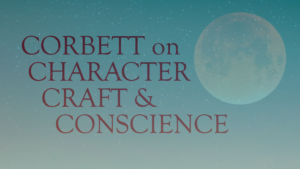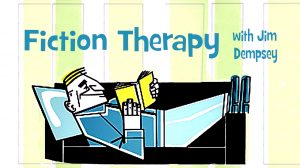Editing
I’ve recently become obsessed with pie.
Not eating it, necessarily—I can generally take or leave most pies—but I’ve been dedicating an inordinate amount of time to making pie…more specifically, pie crust.
Partly I blame the Great British Baking Show for my obsession—my husband and I devoured ten delicious seasons night after night for months, and I managed to convince myself while watching these avocational bakers that I, too, could churn out flaky rough puff like a natural-born pâtissier.
But pie crust, as it turns out, despite having basically four simple ingredients, is a lot more difficult than cutaway shots of bakers expertly book-folding fat chunks of grated butter into dough and rolling it out into a perfect flaky crust might suggest.
Here is a partial list of offenses I’ve committed against pie: burned crust, rubbery crust, crust so leathery and tough we had to cut it with brute force and a butcher knife, crust that tore and had to be patched together into a sloppy Frankenpie, crust that slumped down the sides of the pan and massed in an unappetizing lump around the base, crust that puffed up into a giant blister and then popped, crust I somehow baked into a hard brown edges and a soggy raw bottom.
May I remind you: It’s four ingredients.
Luckily I’m not kidding myself I’m a great baker; nor am I trying to become one. I just enjoy it, and I like the challenge of trying to master a new skill and don’t mind taking the time to travel a learning curve. So each time I make a mess of a pie, I cheerfully bin it and start again (or let my husband eat it, as luckily his pie standards appear to be extremely low).
It’s harder to have that same sanguine approach with you’re dealing with something closer to your heart, like your writing.
Some stories come together so smoothly, it’s almost like they write themselves. But most stories are more like my pie crusts—they may take a lot of work before you get it quite right.
The vast majority of manuscripts I work on with publishers go through three separate edit passes with the author—and this is after however many she may have done before turning it in. Sometimes we go beyond three passes. I’ve gone as high as six on some.
It’s common—and oh, so easy—for an author to get frustrated when a story takes that kind of time and work to come together. She may start to doubt herself—her talent, her skill, her worth as a writer. He may start to doubt the story—is it worth telling? Should he just chuck it and start over?
But if a pie crust—with its paltry four ingredients—can take such effort for even experienced cooks to master (and they do, as I comfortingly learned in extensive troubleshooting online searches), why do authors come down on themselves so hard if they sometimes struggle to orchestrate the vast multitude of ingredients that go into creating a successful story?
I think the answer is twofold:
Read More“A poem is never finished; it is only abandoned.” W. H. Auden, paraphrasing Paul Valéry
I edit books for a living, so I know it’s true that writing is rewriting. But I’ve sometimes seen clients fall into editing traps that can cause real damage to their work. Although some simply waste valuable writing time, others get so caught up in the wrong kind of editing that they either lose sight of or actually blot out their vision of the book.
Before we get into these traps, a caveat. Every writer has their own approach to writing, including rewriting. There are plenty of exceptions to everything I say here. So unless you recognize yourself in the problems I describe, feel free to ignore me.
#
Do not start editing too soon. I’ve written before about how all the elements of a story interconnect with one another to form a complex ecosystem. If you start delving into detailed rewrites before your story, with all of its interconnected character and plot threads, is in place, then you are probably not doing all the editing you need. You cannot know how a character’s voice should sound until you know who they become. Nor can you judge the importance of descriptive details or the relative weight of different events until you know where your story is going. And you may waste time editing scenes that you later cut.
It’s tempting to jump into the editing too early. You may have reached a critical juncture in the plot where you’re not sure what happens next, so you dive back into the weeds of what you’ve written so far, looking for a way forward. Sometimes this works. But more often, the editing is just a distraction. It’s better to buckle down and finish your first draft before you start delving into the details.
#
Starting too early isn’t the only trap you can fall into with your editing.
Read More*sense of humor required
Warning: Hacks for Hacks tips may have harmful side effects on your writing career, and should not be used by minors, adults, writers, poets, scribes, scriveners, journalists, or anybody.
Writers talk a lot about killing your darlings—those wonderful ideas and sentences that you just love, but you cut them because you can’t make them work in your story. But they’re just so great! Do you really have to cut them? Unfortunately, yes. You can’t spell IDEA without DIE, and there’s no better place for your ideas to perish than in your idea file.
What is an idea file, you ask? Well, it’s pretty self-explanatory, but I’ll explain anyway so you won’t know I’m judging your stupid question: An idea file is a document (or a folder containing documents) in which you store ideas you haven’t yet fleshed out, paragraphs that don’t fit, flourishes that sound great but disrupt the flow of the story, and writing that’s obviously crap but you can’t bring yourself to delete because you have weird attachment issues. (If that last bit sounds judgmental, it is, but take solace that I’m judging myself most harshly of all.)
What I’m saying is you don’t really have to kill your darlings. Simply cut and paste them into a different document! Your idea file will make you a better editor. It’s easier to wield the knife when you know the trimmings can be re-attached any time you like. But if a month goes by and you’ve forgotten about the bits you cut? They probably weren’t necessary in the first place. You’re not killing your darlings, you are simply entombing them forever in a sub-folder on your hard drive, like walling up your best frenemy in your catacombs next to the amontillado.
Read MoreFlickr Creative Commons: Florence Bouche
“Beneath the whole story, the subtle, imaginative reader may perhaps find a pregnant allegory, intended to illustrate the mystery of human life.” 1852 review of Moby Dick
I’m a big fan of walling off your fictional world from anything that doesn’t arise from the story itself. Anything that might call readers’ attention to the fact that they’re reading, from weird verbs of speech to an eccentric writer’s voice that doesn’t belong to any particular character to excessive omniscient narration – I tend to edit those things out. The main purpose of writing is to let readers lose themselves in your fictional world. Anything that risks breaking that spell needs to go.
Except . . .
Sometimes you can get away with weaving something into your story that transcends your fictional world. These might be allegories – characters or places or objects that mean something larger than they are, like the Great White Whale. They may be motifs – recurring elements that, taken together, emphasize some underlying theme or tie together different plot threads. You can sometimes even get away with more direct intrusions into your fictional world – I recently edited a wonderful magic realism novel in which the author wrote himself into the story as one of the characters. There is a risk that these elements will undermine the suspension of disbelief. But handled right, they can make your story linger in memory long after the plot and characters are forgotten.
Understand, I’m not talking about allegories or motifs that are part of the fictional world. Characters sometime realize that something in their lives has a larger meaning, and linked themes sometimes keep showing up for reasons rooted in the story. I’m talking about things that don’t belong to any particular character. Ahab never thought of Moby Dick as an allegory.
Ruth and I recently binged the PBS version of Galsworthy’s Forsyte Saga. Through it all Robin Hill, a revolutionary modern house, runs as a motif whose meaning evolves over the course of the story. For those of you unfamiliar with the Forsytes, the house is originally built by Soames, the brittle and grasping lawyer, who sees it solely as a prized possession. Soames also sees his new wife, Irene, as a possession. Irene sees Robin Hill as an expression of the artistic vision of its architect, Phillip Bosinney, so much so that she falls in love with him, even though he is engaged to Soames’ niece, June. These two understandings of the house collide when Soames tries to destroy Bosinney’s artistic reputation by suing him for cost overruns, a thread that ends with Bosinney’s death in a London fog. (One of the reasons Robin Hill was built was to provide an escape from the dirt and fog of London.)
Read MoreLast month I posted about how and why I cut 22,000 words (18% of the original text) from the manuscript I’m currently submitting to agents. That discussion was largely in general terms, and some of you wanted me to be more specific and clearer about what exactly I carved away.
I’ve always found it hard to explain revision—what I change, why. So much of what gets changed or cut has to do with context and often responds to an intuitive sense of: This could be better. Or: This can go.
And by context I don’t just mean the preceding or following words, sentences, even paragraphs or pages, but the entire book.
As I was compiling examples for this post, I came face to face with that difficulty over and over. So much of what I cut resulted from an awareness that I’d said much the same thing (or said it better) elsewhere, and explaining to someone unacquainted with those other instances why this particular line or section had to go would involve laborious explanation.
Also, so much cutting has to do with pacing, and it’s difficult to demonstrate how a certain excised section improves pacing without knowing what comes before and what comes after.
As an editor, I often find myself thinking the story has started to drag when I’ve in fact already indulged one or more previous slow sections and have finally decided: enough.
So too with revising my own work: every time I felt things bogging down I had to ask myself: Is it really just this section or have I inadvertently cut myself unwarranted slack in the previous pages?
Now, as I said last month, a lot of overwriting results from the process of discovering the story for ourselves as we plow ahead. Excess, repetition, redundancy—it’s all part of getting the thing down. The trick lies in going back and recognizing when you’ve indeed been excessive, repetitious, redundant.
I generally believe in the precept: If in doubt, take it out. I then read the section again with the dubious section gone. If the result is still strong and not confusing, the cut becomes permanent.
I often believe that the underlying merit of Less is more lies in a sneaky truth Don Maass has drilled into my head: that readers don’t read to share my experience or the even characters’ experience but to have their own. This among other things means not inundating them with excessive detail—trust the reader, give them room to imagine things for themselves.
And afterward, when the revisions are made, take to heart Josh Mohr’s invaluable advice: Learn to respect the pages the reader will never see.
Now, with those difficulties laid out at the outset, let me do my best to provide some examples of what I cut and explain why I did so, with the intention of hopefully providing some useful tips for your own revision efforts.
There were several general areas where I found myself going astray, and I’ll identify those as topics as I go along. Some will overlap, because often overwriting is rooted in more than one mistaken decision.
Ready? Here goes.
Read MoreOne of the great pleasures of spring and summer is cleaning up the garden and planting new things. At the end of a vigorous session in the backyard I look at the big tub of weeds—or the overflowing bed of the pickup truck if I’ve been really busy—and gauge my progress. At this point, one might admire one’s flowerbeds or vegetable patch and say to oneself, Hey, super good work, woman! This looks fabulous. You definitely deserve a chilled beverage. Aperol spritz?
I don’t do that.
I mean, I do drink the Aperol Spritz, but I don’t allow myself that positive self-feedback.
I only see the weeds.
Progress, for me, is gauged on the pile of ugly, invasive, stubborn weeds I’ve removed. Instead of admiring the beautiful plants that remain, or patting myself on the back for blending shades of purple and synchronizing bloom times, I immediately look for more weeds.
So, it has occurred to me that although it is important to control the weeds, it might be equally important to control one’s focus on the weeds.
When we’re writing a draft, it’s easy to get stuck in that overgrown, weedy place. Sometimes we’re overwhelmed, unable to see the beautiful blossoms or wildflowers mixed in with the bad stuff. Sometimes, when we’ve pulled the metaphorical weeds from a draft or else heard constructive criticism about what might get chucked out, we don’t stop to appreciate the work we’ve accomplished—that really good idea that inspired us and got us started. Don’t get me wrong, it’s helpful to self-edit and not just plow ahead like one is the greatest thing since the power lawn mower, but sometimes we don’t see the garden for the weeds.
I asked two questions of four fellow novelists. Here’s what they had to say:
What are your writing weeds, and how do you deal with them?
“Oh, how many writing weeds there are in the novel garden! Self-doubt. Scenes written into corners. Characters who don’t behave and go so far off track you wonder what story they’re trying to crawl to. Impostor syndrome (My God! I have no idea how to write a book!) The blank page. The anxiety and dread that THIS story will be the one that well and truly stinks. For me, the only way through all this is through. Figure out the word count you need to meet for each week. Visualize the consequences of not making your deadline, because that’s enough to keep your seat in a chair, I think. A good word count day is a positive day. There will be something that blooms in what you wrote. And PS – I love to kill my darlings! In fact, if I find myself with chest puffed out because I’ve just written a beautiful or clever line of dialogue or prose, I know it needs to be snipped out immediately.”
—Kim Taylor Blakemore, author of the recent novels The Companion ( Lake Union, 2020) and After Alice Fell ( Lake Union, 2021)
“My personal writing weed is overwriting. In particular, I’ve never met a prepositional phrase I didn’t like. While drafting, I often use prepositional phrases throughout. In editing, they magically disappear. The reason for this is that I […]
Read MoreWhen it comes to revising, I am team right-brain all the way. (That statement is pretty much true when it comes to life as well.)
I cannot do spreadsheets. They make me nervous and give me hives and I’m constantly forgetting what’s at the top of the column and inputting the wrong information. I love Scrivener for drafting, but its organizational properties are beyond me. I have been known to forget the name of the current draft I am working on and spend all morning tinkering with the wrong one.
In other words, I’m a revising failure.
And yet, in the past two years, I have revised my manuscript more times than I can count, bringing it from hot mess to passable to ready-to-send-out to agents to … sold. So, in the interests of assisting my fellow right-brainers, here is my method. (All my left-brained friends, please look away. You may get queasy.)
Write down one line that captures what your story is about on an index card and tape it above your computer. Every time you work on your manuscript, read it, and ask if the changes you are making serve that story. (Keep in mind that what’s on the card may change. When I started my current book, DARLING GIRL, my card read “What would happen if Peter Pan grew up and turned out to be a real son of a bench?” Over time, that evolved to “What lengths will a mother go to save her children, and what if she has to choose between them?”)
Read MoreOne learns a lot about one’s writing habits—and oneself—when cutting almost 19 percent of a manuscript, paring it from 119,000 words (476 pages) to 97,000 words (409 pages).
Mind you, this wasn’t a first draft—it had been reviewed twice by a Zoe Quinton, a developmental editor I very much respect and trust (and whom I interviewed here at Writer Unboxed). After our work together, she said:
“SO well done. I’m blown away by the amount of work you did, and how well you integrated all the pieces together to form a truly stunning, gripping whole. I loved every minute of it, and nearly cried at the end, even knowing what the basic setup would be. You’ve got a hell of a book here, one of the best I’ve ever worked on. Bravo.”
Once I began submitting to agents, however, with the exception of two agents I’ll discuss shortly, I either heard nothing back or got the seldom helpful, “Not for me, good luck with it elsewhere.” The two agents who provided some feedback said two very different but very helpful things. (It’s currently under submission with two other agents, one of who seems particularly receptive.)
The first of the two agents who provided notes complimented my writing but remarked that my use of a gay, bi-racial (Cambodian/African American) woman main character made the book virtually impossible to sell in today’s cultural environment given the #mystory movement.
The second agent, despite liking a great deal about the book, comparing it at one point to American Gods, felt a lack of “narrative urgency” in the writing.
In discussing all this with Zoe, she responded that my female character’s sexuality and race had raised no reds flags for her, and she is sensitive to such things. She also found comparing the book to American Gods then bemoaning a lack of narrative urgency puzzling, as Neil Gaiman’s novel is hardly a full-throttle page turner, but shares some of the philosophical, mythical, and historical texture of my book.
Let me be clear: I in no way fault Zoe for the extensive post-edit rewrite I ended up conducting. Her job was to read the book, note its shortfalls as she saw them, help me correct them, while at the same time being conscientious of what she saw as my voice, my style, and the type of book I seemed to want to be writing—a big, sprawling, dystopian journey covering a great deal of the American landscape with a mythical backdrop.
But given my respect for the two agents who gave me notes, I felt obliged to pay attention to what they were telling me.
Read MoreI was in high school when I first read Joan Didion’s essay “The White Album,” and since then I’ve felt like my life has been divided into two eras: B.D. (Before Didion) and A.D. (After Didion). Not only did the vibrant setting of late-1960s California appeal to me, a child of the 1990s who combed her parents’ music collections for every song by the Doors, Simon & Garfunkel, and The Box Tops she could find. But the way Didion seamlessly interwove commentary on the era’s politics, zeitgeist, and her own unflinching self-observation changed the way I understood nonfiction and, by extension, writing.
As a writer who has always been drawn to fiction and, lately, fantasy, I’m in awe of memoirists and creative nonfiction writers. Writing anything is a vulnerable act, but being able to write, edit, and present to readers a portrait of yourself has never sat comfortably with me. When I try to write a scene from my own life, I’ll often slip into second person point of view lest I become overwhelmed with emotions and the sentences turn into a diary-like run-on of emotions. I think I’m afraid I won’t like what I see if I turn that spotlight on myself.
It turns out, though, that trying to avoid self-reflection doesn’t do your fiction any favors, either.
Read MoreAs an author, you want your novel to be the best it can be. A top quality product means good reviews, word of mouth recommendations, which lead to increased sales. But just a few typos and grammatical errors will put readers off. Before they’ve even fallen over your plot holes, they’re filling message boards with mocking remarks about a couple of innocently misplaced hyphens or an occasional dangling modifier.
Most writers know this, and they diligently take time to search for editors who can check their manuscript for errors. But often a glance at the editor’s price list is enough to send an author clicking back to more fun ways to procrastinate. Suddenly, those increased sales seem a little too far down the line to justify the investment.
But you needn’t be intimidated by those price lists. In fact, there are many ways to cut the cost of a professional editor. Consider these five before you decide to stick with your potentially flaw-filled manuscript.
Don’t even send your second or third draft. Wait until you feel you can do no more with your story beyond changing that comma to a full stop and back again. It’s at that moment, when you feel you’re ready to publish your novel or send it to an agent, when you should, in fact, send your manuscript to a professional editor.
Unless you’ve been through a revision process with a story consultant or writing coach, then your first contact with an editor is likely to be for a developmental edit where you’ll get help with plot, structure, character development and flow, among other things. If these story elements aren’t already well established, you’ll be basically paying for the editor to help you rewrite, which will be time and money consuming. Revise as much as possible first, and you’ll definitely save on editing costs.
This is particularly important when dealing with editors who charge per word. But, generally, more words mean more work, so you’ll still win with editors who charge per hour.
It’s that simple. Except it’s not. Almost every author wants to reduce their word count but can’t choose which of their darlings to kill.
There are lots of articles on the web with tips to reduce your word count, but here’s one editing trick that can get rid of whole chapters: cut the backstory. Backstory is anything that happened before your main story started. You’re most likely to find it in the first pieces you wrote, those that have survived every redraft. That’s because you, the author, needs to know these specific incidents to understand the characters. That’s why you think they’re so important. In truth, the reader doesn’t need quite so much information and you’ve probably included the same details in a shorter and more subtle form elsewhere in the text.
These will be the most difficult cuts, but try it. Look out for those flashback scenes in particular and ask yourself if the reader, not you, really – really – needs those few hundred extra words.
There’s more to finding an editor than looking around for the cheapest. You’ve worked many long hours on your story, and there’s a lot of personal investment in every […]
Read MoreAuthors spend so much time perfecting our writing—making it say just what we want it to say as effectively as we can, trying to get our vision onto the page—but it’s hard to know when we’ve actually reached that finish line and the story is ready.
Yet because story doesn’t fully come to life until it reaches readers, at some point you have to push your fledgling out into the world or it’s never going to fly. There’s no objective marker for when a story is “finished,” but here’s a checklist that may help you know when it’s ready to leave the nest.
The Über-question
Is it on the page? This is overarching question for each element of story below. As authors we know our stories, characters, and worlds so well that it’s hard to objectively assess how well we’ve actually conveyed all of it on the page, versus how much we’re “filling in the blanks” in our own heads. For each question below, refer directly to the manuscript itself—not your notes, memory, or mental image of the story—and ask yourself, How do readers know? Specifically where and how can they glean it on the page?
Editing Checklist Overview
The big picture:
Read More
April 2020 in the ancient Greek city of Myra, now lying in contemporary Turkey. Image – iStockphoto: Mehmet Uğur Özer
Fits and Starts
I’ve noticed that when looking back at the year since the first major outbreaks of the coronavirus, what stands out are leftovers of various stages of understanding and concern and response, stages of attention, many of them reflective of the earnest but evolving understanding of COVID-19 among scientists–and a stunned public. None of this is meant, by the way, to be funny. It’s not in the least funny, though at times it’s ironic. And it’s worth a few minutes of thought.
There were videos–for adults–about how to wash your hands, remember? Some had such special instructions as, “Don’t forget your thumbs.” The real test became how fast you could sing Happy Birthday to You.
And because we’d so carefully remembered our thumbs, you soon found people on social media urgently asking each other how best to moisturize their chapped hands amid all the washing.
There were staging areas recommended for groceries-arriving and groceries already wiped down.
There were shortages of all the wrong things, and the resulting fixations on finding those things, now long returned to their usual state of mundanity–even as peculiar shortages in local stores still pop up today. In this part of the world, there have been great store-management apologies for a paucity of … Grape Nuts. If you’re the one hoarding the cereal, come clean now.
Disposable gloves needed to be researched and considered for nitrile vs. vinyl vs. latex, or those traffic-cop white cotton models. And why did the dark blue ones look so schmick?
At a certain stage, trying to get a friend or family member or colleague to understand the term aerosolized may have taken up a lot of energy and focus.
“It’s why that one-foot-by-two-feet piece of Plexiglas is not going to help except for direct spray,” you heard yourself gently explaining, “anymore than designating one end of the swimming pool for spitting will help. It’s in the air someone else exhales. And that’s all around you, see?”
And they didn’t see, many of them, because they simply couldn’t see.
If anything, the low-cost pulse oximeter has become a favored device of the era, not only because it’s a rather cool technology but also because it renders something, anything, visible. You put in your index finger. Red lights are beamed into that finger. And it tells you your blood-oxygen level, your “SpO2.” High-altitude climbers knew this.
But then, a fairly recent turn in general practice seems to be easing another use of bio-feedback. It might be voiced along the lines of, “Wait a minute. If they’re asymptomatic, they won’t have a fever. Fever is a symptom. Oh, yeah.” Followed by the beep of the infrared thermometer being turned off.
And if someone’s nose isn’t covered by a face mask, has a tree fallen in the forest of CDC directives?
And What About Chapter Four Was So Hard?
In looking back over some content written a while ago, I’ve lately perceived a parallel here.
Provocations graphic by Liam Walsh
At the outset, I should add that the […]
Read MoreLast month, I talked about the importance of keeping your writing real. This month come the caveats and other notes.
Some commenters last month asked about how keeping your writing real — using authentic and specific details in your descriptions — relates to your point of view. And, yes, what your viewpoint character notices depends on both who they are and how they’re feeling at the moment. If your viewpoint character is too thick to notice much of anything, then you have to adjust your descriptions to match.
D. E. Stevenson’s Miss Buncle’s Book is about a woman who lives in a small town and makes the mistake of writing a book based on her neighbors, all of whom recognize themselves in the story once it’s published, except for Colonel Weatherhead. He fails to see himself in the book’s “Major Waterfoot,” who falls in love with a neighbor in the book, “Miss Mildmay.” But in the book, Major Waterfoot is living a sad and lonely life that Colonel Weatherhead finds hauntingly familiar. And that recognition – or lack of recognition – leads him to court and eventually propose to his neighbor, Miss Bold.
If you look carefully at scenes from the Colonel’s point of view elsewhere in Miss Buncle’s Book, they show the obliviousness that led to his engagement. A tool shed is “a dark musty place (as toolsheds so often are) filled with worn-out tools, and a wheelbarrow and a lawnmower, and festooned with spiders’ webs . . . “ Note that the only things he notices are the things he will run into or trip over. Later we hear about a walk home when “it was still raining and everything was dripping wet,” as so often happens after a rain. Clearly the Colonel is not the most observant of men, and Stevenson shows this by leaving out details in all of his descriptions.
Read More




















